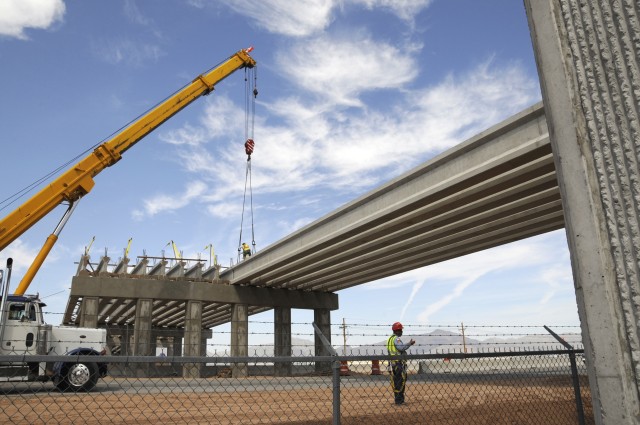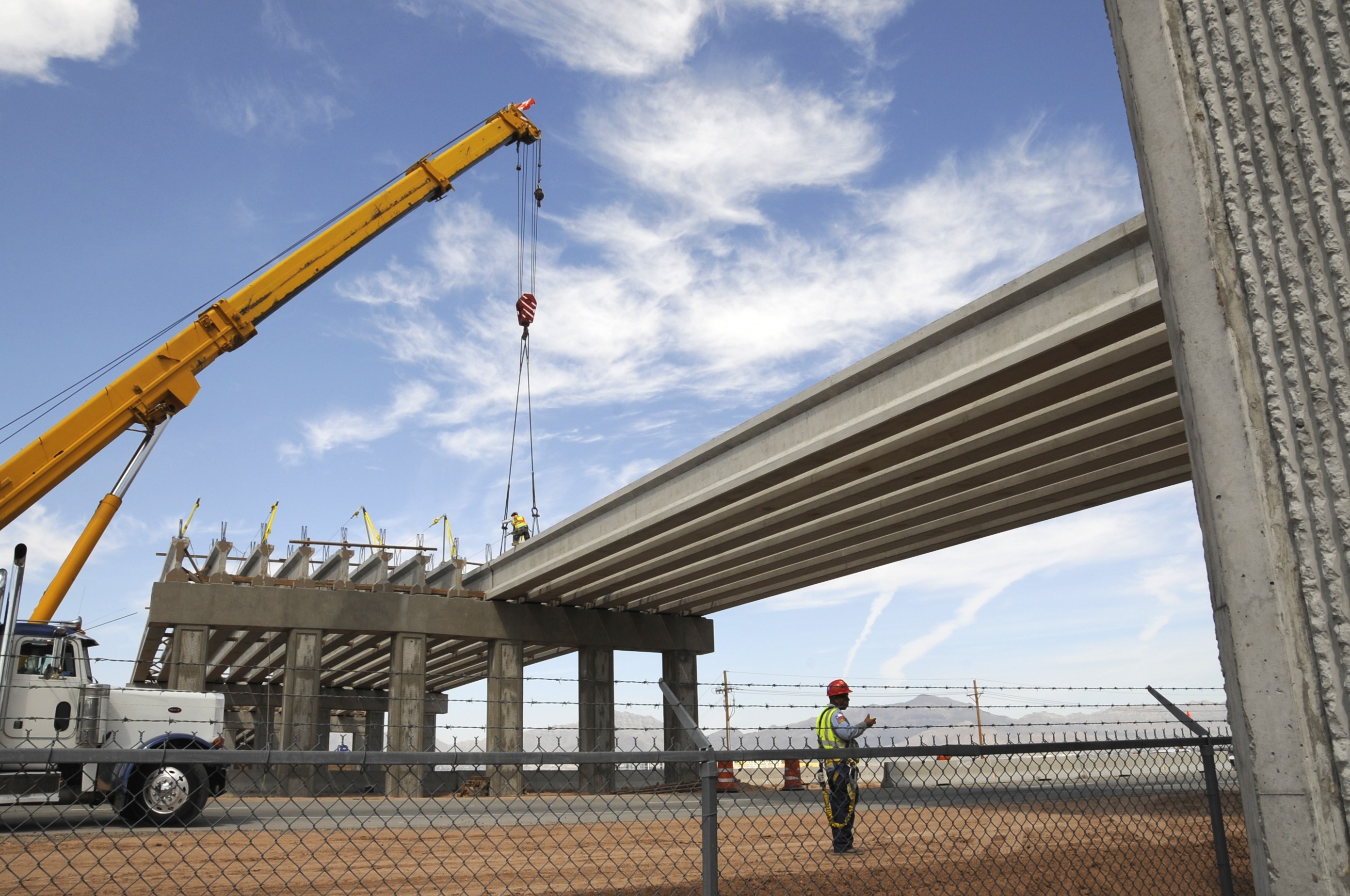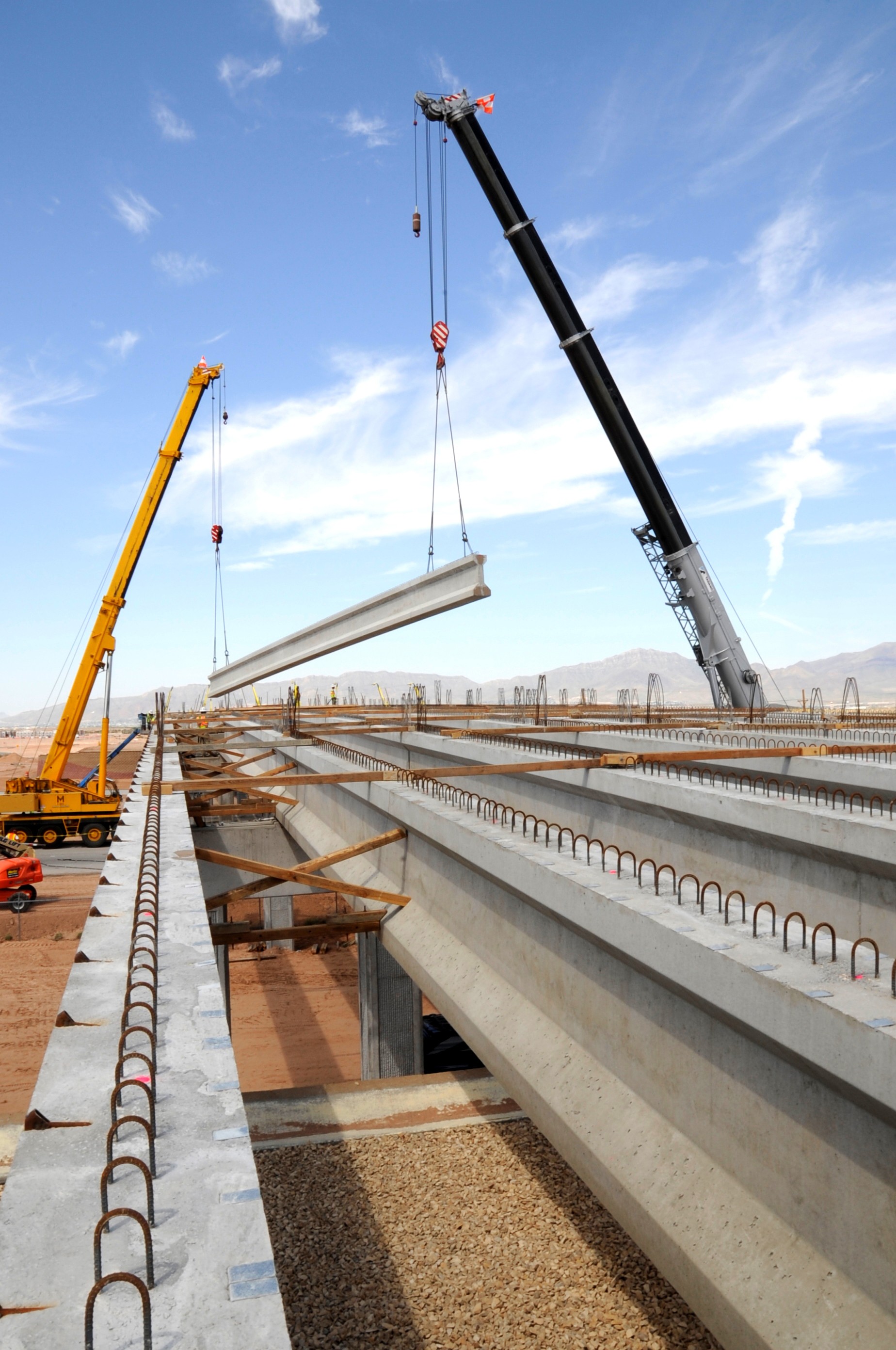The U.S. Army Corps of Engineers and contractors finished laying the last span of reinforced concrete beams Saturday that help make up what will be the bridge that connects Fort Bliss with the currently developing post land east of Loop 375.
The areas that comprise East Fort Bliss, which houses Soldiers of three brigade combat teams, make up what the USACE and associated contractors call BCT 1, 2 and 3. The bridge connects that land with the construction area across the loop known as IBCT 1 and 2, according to Master Sgt. Greg Ozimek, USACE project coordinator and quality assurance representative.
Ozimek said the IBCT project is an approximately 1,400-acre project on a 5,000-acre footprint and consists of more than 70 buildings and a bridge. The IBCT area, Ozimek said, will eventually be the "forward edge of training" for Fort Bliss.
That's why the bridge is equipped to handle everything in the Army's inventory, he said, and referred to as a tactical bridge. Ozimek said the finished product is not designed exclusively for tactical travel, though. Anyone authorized to drive on Fort Bliss roads will be able to cross it.
"It's a DoT-spec, heavy-equipment-rated bridge for full-time use in any weather conditions," said Ozimek. "As you can see by all the beams, it's rated to handle bumper-to-bumper tank traffic."
The last of the 105 beams that help make up the bridge's substructure brings Fort Bliss one step closer to the expansion across Loop 375.
USACE Project Engineer Enrique Roldan said the bridge is set to connect the BCT 3 area with the IBCT areas and will afford units "faster mobilization, a faster connection and direct access between two brigades."
"There's a lot of effort from the contractor, from the Corps of Engineers, from the designers - so it's been a team effort in getting this project together," said Roldan, who added the work is also in conjunction with the Texas Department of Transportation.
From the bridge, Ozimek said as far as the eye can see looking east is the IBCT project. USACE has started erecting barracks, unit buildings and "concrete ribbons" that are part of a network-to-be of tank roads so Soldiers can live where they work.
"You'll be able to get in your tank, run out to the training area, run back, go through the tank wash, park your tank and go home," he said. "It will be like cavalry, only your tanks are replacing the horses and stables. ... The idea is to eliminate truck transport, road marching and all of that. You'll be able to go right out onto the training area."
Ozimek arrived to Fort Bliss seven months ago from Florida, where he helped build "cities with their own zip codes" and a highway with 93 bridges. He holds a bachelor's degree in construction management and an associate degree in civil engineering.
He is also a combat engineer with nearly 28 years in the Army, and holds the designation of construction supervisor. The Army brought him to the project because of his experience and background through a program called Partnership for Fiscal Integrity.
"PFI is basically the Army's headhunter - personnel hunter - and they locate people with unique skills and apply them on active duty," Ozimek said, and added that he is the only Soldier on the project.
"I'm it," he said. "I'm the Soldier on the billion-dollar project, and I represent the end-user, which is the Soldier. It's kind of a unique opportunity for me ... because I'm the tip of the spear."
Ozimek was also the only Soldier to see contractors finishing the final span of beams, which he isn't the end, but something to see.
"This is one of the more unique moments in a project that ... culminates so much of the substructure and the earthwork - the deep foundation work - and you finally set your beams, and you say, 'OK. Now we're going up,'" he continued. "We've still got a deck to put on, which is a good deal of concrete and a lot of work. The deck goes in and ties the beams together in one big, solid mass."
"The progress is really fast," said Roldan. "Actually, we're ahead of schedule, and I think we're going to deliver this bridge by the end of the year."




Social Sharing